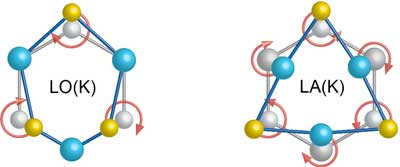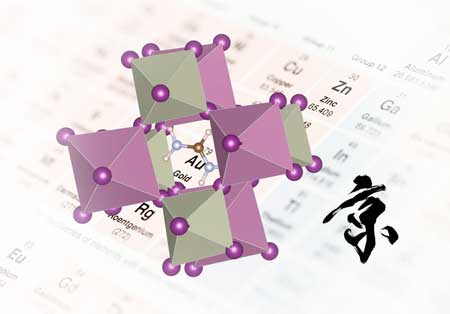
Friday, February 2, 2018
Eesearchers develop new surface design inspired by snake skin
Researchers have developed a design construct inspired in part by the surface of butterflies and snakes, where flexible skins are fully covered by rigid, discrete scales.
New controls scale quantum chips
Engineers and physicists describe a breakthrough that can expand the size of practical quantum processors by reducing interference.

Building miniature optical antennas using DNA as a guide
A new fabrication technique combines programmable DNA origami shapes and conventional lithography methods to create metallic nanoantennas and chiral shapes for diverse applications.

Measuring the temperature of two-dimensional materials at the atomic level
Researchers describe a new technique for precisely measuring the temperature and behavior of new two-dimensional materials that will allow engineers to design smaller and faster microprocessors.

Scientists found and studied complex types of defects in the droplets of liquid crystals
Scientists have studied the droplets of a cholesteric liquid crystal that contained a twisted defect loop.

Creating an electron-hole liquid at room temperature
Making a liquid out of electrons is complicated, but it opens the door to research in a wide variety of electronics. Now, physicists have created a phase diagram that can help researchers create this liquid at room temperature, making it much easier for everyone to study.

Scientists discover 'chiral phonons' - Atomic rotations in a 2-D semiconductor crystal
Experiments confirm the first chiral phonon that could enable exotic forms of electronics.

Monitoring positive charges in solar materials
Scientists have implemented a novel way of detecting positive charges (holes) and their trapping in solar materials.

Nano-switches in the cell
Researchers have discovered a new mechanism for the regulation of protein synthesis.

New nanomaterial risk assessment project kicked off
The newly started H2020 GRACIOUS project will develop a highly innovative science-based framework that supports the assessment of risk posed by the ever increasing array of nanomaterials on the market and under development.

Superconductors earn their stripes
Scientists have provided the first evidence of a hidden superconducting state above the superconducting transition temperature. Such a state has been elusive to detect since it is invisible to most experimental probes.

Supercomputer predicts good solar cell materials
A supercomputer simulated more than 11,000 compounds to find promising materials for a new type of solar cell.

Study analyzes the potential and the challenges of flexible mechanical metamaterials
New review article discusses the challenges facing flexible mechanical metamaterials.

Subscribe to:
Posts (Atom)
